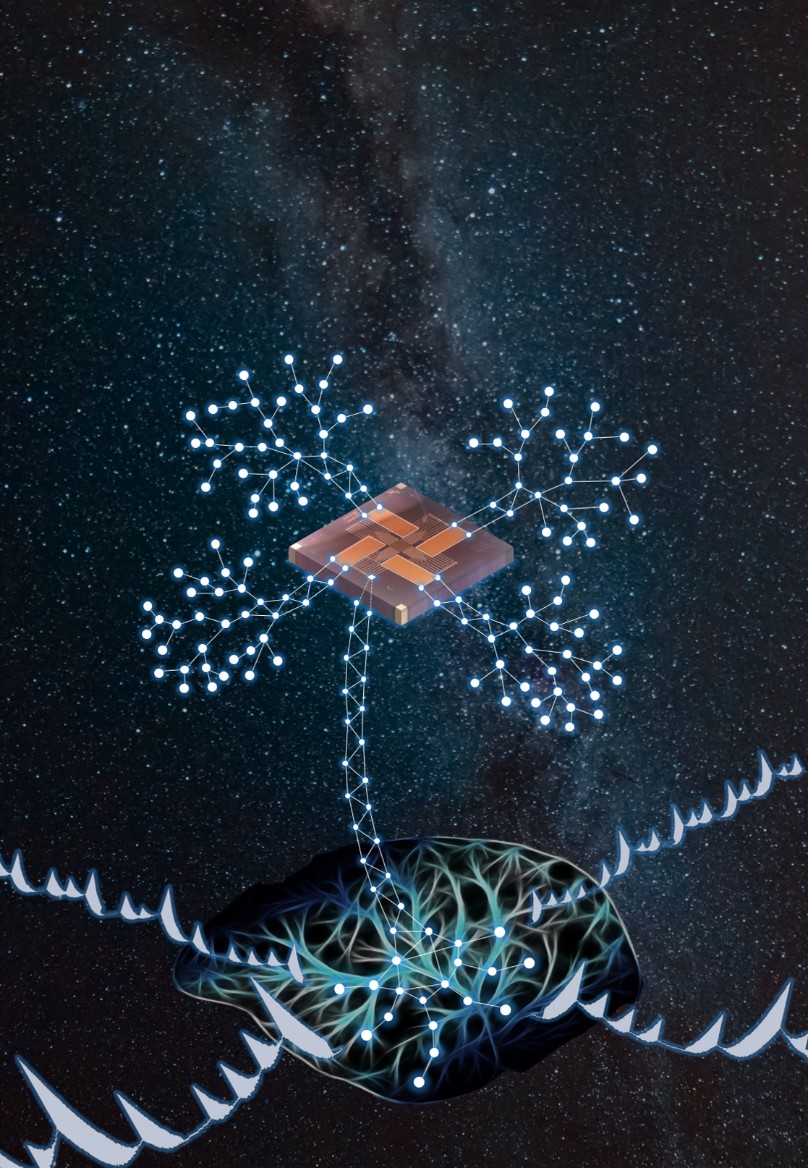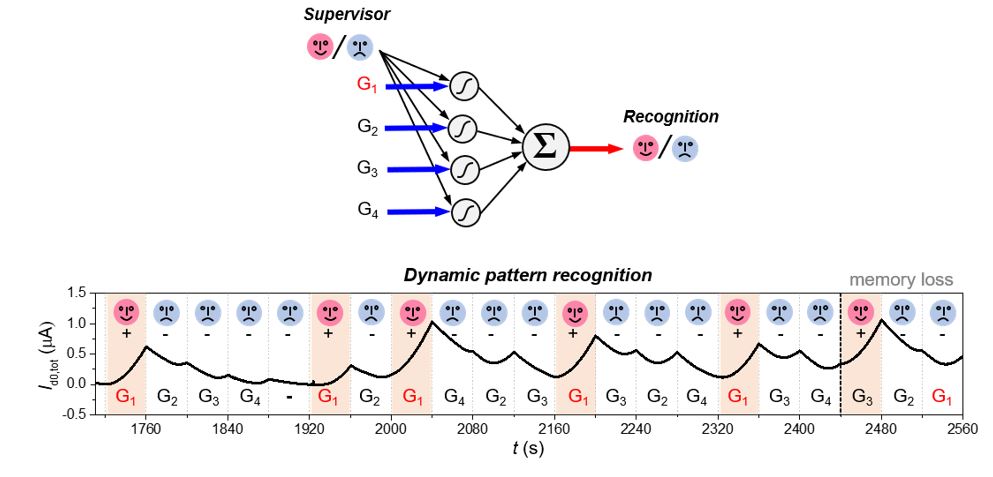Prof. Carlo Vittorio Cannistraci together with Dr. Eunhye Baek from Tsinghua University have proposed a hybrid silicon nanowire ‘Neurotransistor’ that emulates the intrinsic plasticity and dynamic learning of a neuron cell. The dynamic nonlinear signal process of the neurotransistors can be applied as a key processing of neuromorphic computing machine which might replace conventional computers for next-generation artificial intelligence.
Computational electronics rely on devices with a separation between memorizing and processing of information – the so-called von Neumann architectures. Currently, building blocks of transistor logics undergo a continuous downscale of their dimensions, aimed to increase the integration density and latency at the circuit and system level. It is certain, however, that the increase of the system performance and the drop of the power consumption can be explored not only by means of aggressive scaling of the current CMOS technology, but rather via breaking the paradigm in the device architectures and their functionalities.
This new paradigm is offered by brain-inspired neuromorphic architectures. Those are envisioned to merge the learning and memory functions within functional unit cell, similar to a neuron. If available, an artificial neuron would be a key player of physical neural network assuring that processing and memorizing of information is done in the same functional unit. This requires an architecture, which is able to mimic the intrinsic plasticity of neurons, i.e. dynamic adaptability of neuronal excitability. In contrast to the already well-established artificial synapses that can be considered as two-terminal devices, the structure of an artificial neuron has striking similarity to a transistor.
A neurotransistor – a device based on a silicon nanowire coated by a sol-gel silicate film doped with highly mobile ions - is proposed by Dr. Cannistraci and Dr. Baek together with an international team of collaborators, and this study is now in “Nature Electronics” ( https://www.nature.com/articles/s41928-020-0412-1). The research team experimentally proves the presence of intrinsic plasticity in neurotransistors. This is a characteristic, which is peculiar to dynamic signal processing of neuronal membrane. The plasticity is assured by the ability of ions in the silicate film to redistribute freely. This enables the sol-gel layer to act as a pseudo gate and allows for a short-term neurotransistor’s memory. We confirmed that the proposed neurotransistor transforms a pulsed input signal into a sigmoidal weighting of the output current. This functionality resembles the operation of a neuron cell, where a membrane potential induces sigmoidal change of ionic current.
The output response of the neurotransistor is governed by the history of the input signal, stored as ionic states within the silicate film and thereby enabling the learning capability of the neurotransistor. The learning ability is extended to a recognition of an input pattern, such as classification of happy or sad faces, after adequate training times. The recognition of the pattern is presented as time-varying dynamic output signal (not digital output) which is one of the key feature of the device that emulates a real neuronal rhythmic behavior.
Dr. Eunhye Baek from Center for Brain-inspired Computing Research, Department of Precision Instrument and Beijing Innovation Center for Future Chip at Tsinghua University, first author of the study, says: “This work constitutes a major step towards merging neuromorphic nanoelectronic devices and conventional Si-based CMOS systems. We envision that the developed neurotransistor can perform as computing node in a complex neural network. When combining it with memristor devices as synaptic edges, the realization of the entirely brain-inspired hardware based neuronal network becomes possible.”
Prof. Carlo Vittorio Cannistraci from the Tsinghua Laboratory of Brain and Intelligence at Tsinghua University is who discovered the presence of intrinsic plasticity in the device. As co-author of the study, he says: “I was following the talk of Dr. Eunhye Baek in a conference. She was showing the time-current behavior of the device she designed. At that time her work was preliminary and she was trying to characterize better what type of biological plasticity could emerge in her device. After her talk finished, I told her: Congratulations! You might have discovered the first transistor that is able to emulate the intrinsic plasticity of the neuronal membrane. We started a fruitful collaboration to prove this hypothesis, which is now an accepted scientific evidence. Our joint effort for future research is towards neurobiological and AI applications of the modeling principles associated to the neurotransistor.

Figure 1. Brain-inspired dynamic neurotransistor chip

Figure 2. Dynamic pattern recognition of neurotransistors

Eunhye Baek

Carlo Vittorio Cannistraci
